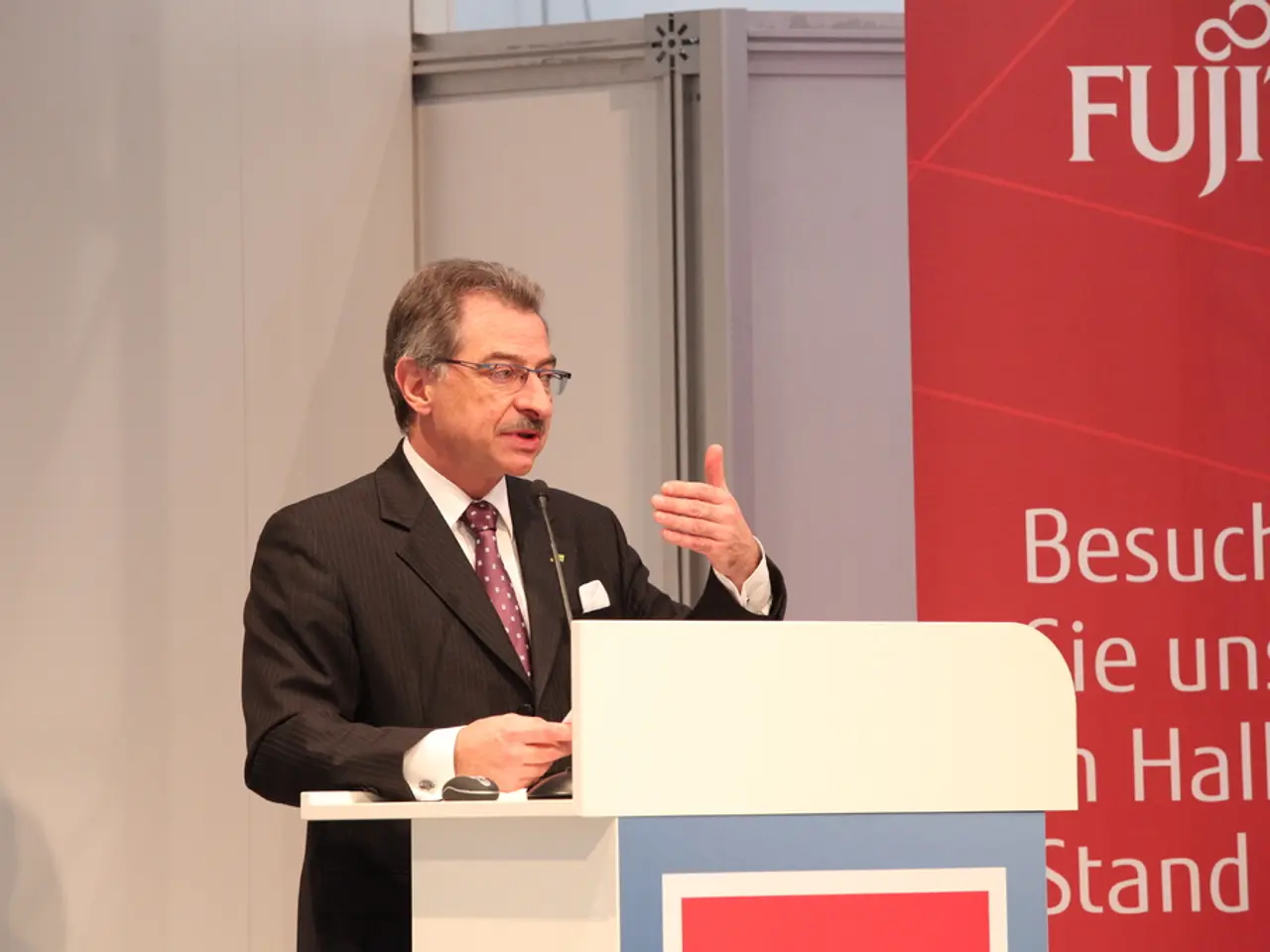Global banks targeted by Trump, specifically mentioning Thailand, as part of attempted pressure on the Federal Reserve
In a time of economic uncertainty, the Federal Reserve continues to navigate the complexities of inflation and recovery, with the ongoing impact of tariffs adding an extra layer of complexity.
As the June 2025 meeting concluded, the Federal Reserve decided to keep the federal funds rate steady at 4.25% to 4.50%, marking the fourth consecutive meeting without a change. The decision comes as economic activity continues to expand solidly and labour market conditions remain strong, yet inflation remains somewhat elevated, justifying the current stance[1].
The inflationary pressures, largely due to President Trump's tariff policies, have kept prices elevated this summer, delaying potential rate cuts. Fed Chair Jerome Powell has publicly acknowledged the impact, stating that if not for these inflationary pressures, the Fed would likely have cut rates by now[2][3].
The tariffs, representing the highest U.S. rates seen in nearly a century, act like external taxes on imports and contribute to inflation pressures that complicate monetary easing. Despite mounting pressure from President Trump, who sent a handwritten list suggesting the US rate should be between Japan's 0.5% and Denmark's 1.75%, the Fed is prioritizing its dual mandate of maximum employment and price stability[4].
Treasury Secretary Scott Bessent has begun mapping out the likely plan for Powell's replacement, with Current Governor Adriana Kugler's term expiring in January. Bessent suggested that her replacement may become the chair when Jay Powell leaves in May[5]. However, the Fed remains committed to its data-driven decisions, evaluating economic data closely and deciding on rate changes "meeting by meeting," without committing to an immediate cut[3].
A majority of Fed policymakers do feel it will be appropriate to begin cutting rates later this year, with the next opportunity being the July 29-30 meeting[3][4][5]. Regarding the upcoming expiration of tariffs, Powell has implied that any easing of tariff-related inflation pressures could influence future decisions. The Fed is watching carefully how tariffs, inflation, and economic indicators evolve before deciding on rate cuts.
In the past, a 1% policy rate has been associated with weak, even recessionary economic growth rates and periods of low inflation. Despite President Trump's insistence on sharp reductions, the Fed remains steadfast in its commitment to a data-driven approach, balancing the inflation risks amplified by tariffs with the economic recovery.
It is important to note that Trump cannot fire Powell over a policy dispute, but last week urged him to resign. Trump's statement, "being a central banker in the US was 'one of the easiest, yet most prestigious jobs in America, and they have FAILED...We should be paying 1% interest, or better!'" highlights the ongoing political tension surrounding the Fed's decisions.
As the July 29-30 meeting approaches, the world waits with bated breath to see if the Fed will heed the calls for rate cuts or remain steadfast in its commitment to data-driven decisions. The Fed's balancing act between inflation risks and economic recovery will undoubtedly shape the course of the U.S. economy in the coming months.
[1] Federal Reserve Press Release, June 2025. [2] Powell, J. (2025). Testimony before the Senate Banking Committee. [3] CNBC (2025). Federal Reserve officials signal rate cuts later this year. [4] The Wall Street Journal (2025). Trump urges Fed to lower interest rates. [5] Bloomberg (2025). Bessent maps out Powell's replacement plan.
- The economic uncertainties, stemming from the complexities of inflation and recovery, have also extended into the realm of international politics, as various international bodies and organizations closely monitor the Federal Reserve's decisions.
- The ongoing impact of tariffs, particularly in the business sector, has raised concerns about the future of corporate profits and, consequently, the health of the economy, which has caught the attention of financial analysts and media outlets reporting on general news.
- The ongoing tariff dispute, combined with the Federal Reserve's concern over inflation, may have implications for policy-and-legislation at both the national and international levels, as lawmakers seek to address the potential long-term effects on employment, tourism, and overall economic stability.
- As the global community watches the Fed's decisions closely, there is a growing interest in understanding how the Fed's choices will influence financial markets and the global economy, making this a crucial topic in discussions regarding political and economic analysis.




